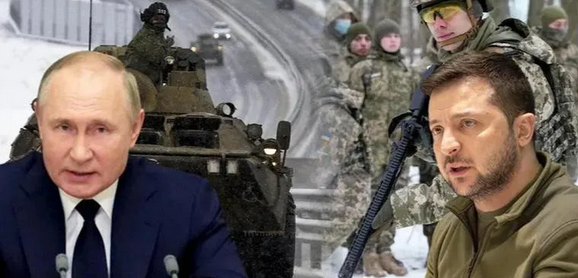The war in Ukraine began under a faulty assumption shared by many, including the United States, that if Russia invaded, it would defeat Ukraine, and it would do so quickly. The Russians deployed their forces carelessly, without much regard for the Ukrainians. When the Russians encountered resistance against their disorganized armored and infantry forces, operating pretty much without air support, they acknowledged problems but continued to assume that the problems they faced were simply the friction of the battlefield rather than something that risked the outcome they assumed was theirs.
The United States still tended to share that view but sent supplies to Ukraine via Poland, a move meant to show that Washington was committed more to the resistance than to a belief that Russia was at risk. Moscow continued to press on three fronts: from Belarus in the north, through the Donbas in the east, and from Crimea in the south. It was a chaotic advance thanks to a lack of coordination of the fronts and the inability to supply three separate fronts simultaneously. The Russian failure was symbolized by the 40-mile backup of tanks moving south from Belarus toward Kyiv.
The most startling thing, and one likely to be studied by military historians for years to come, is that the Ukrainian resistance did not break and in many instances intensified. This led to a reevaluation by both Americans and Russians that the Ukrainians might successfully resist for an extended period of time, embarrassing the Russians so much that it would cost them badly needed credibility with partners like China. From the American point of view, Ukraine shifted from being a lost cause, in which defeat had to come gracefully, to a strategic opportunity.
The shift was made possible by Russian failures. Washington had already made what it felt was the least dangerous strategic move in waging economic and financial warfare against Moscow, and in uniting NATO to support the mission. But that doesn’t explain Russian problems on the battlefield: logistics, the inability to mount mobile warfare because of logistics, and the shortage of trained infantry. It’s why, even as Russia abandoned its armored thrust toward Kyiv from Belarus, and as it adopted a much more cautious strategy of moving against Donbas, where it already had substantial influence, and a southerly attack toward Odesa, time wasn’t on Moscow’s side.
So Russia brought in a new commander who had operated in Syria using both conventional warfare and counter-population attacks. The same tactics applied to urban areas worked but more slowly and with greater casualties to infantry than Russia could readily sustain. At this point, it became clear that Ukrainian forces were highly motivated and reasonably well trained. They could take casualties, replace them and not have their force collapse. Not so with Russia. Ukraine could very possibly fight the Russians to a stalemate that the Russians couldn’t afford militarily or politically. Given the paucity of Russian reserves, it was possible that Ukraine might force the Russians to retreat or even withdraw.
At this point, U.S. strategy shifted. Over the weekend, the U.S. secretary of state and secretary of defense went openly to Kyiv, showing disregard for Russian interception, and offered the Ukrainians a massive infusion of weapons from unmanned aerial vehicles to artillery, radar and everything else needed to arm a modern army. The fact that the arrival of these weapons via Poland would take some time showed another degree of confidence, which was that the fighting would be going on in the weeks and months that delivery would take. When we look at the full array of weapons, we can glimpse that the U.S. is now arming a force capable of going on the offense.
The war has always involved the U.S. and Russia, but in a sense, it is now an open duel between them. The Russians must provide troops and equipment. The U.S. is providing equipment but not troops. The American bet is that Ukraine can field more and better-trained forces armed with advanced weapons, while Russia will have to struggle to replace its losses. It is far easier for the United States to produce and ship weapons than it is for the Russians to sustain losses.
This puts Russia in a difficult position. Given the weapons flows announced and the other weapons likely to be supplied, it must try to end the war in the next month or so, only against a much better-armed and motivated Ukrainian force. And having failed to break them so far, the direction of the war is going against the Russians.
The visit by two senior cabinet officials, and the very open listing of at least part of the arms shipments, is clearly intended to signal to Moscow that not only will it not defeat the Ukrainians but Ukraine might force Russia from the battlefield altogether. Obviously, a Russian preemptive attack is now a possibility, but an obvious strategy for Ukraine is to hold, retreat and rearm. Perhaps the Americans are also hoping that this will force the Russians to the negotiating table. That would be the lesser risk. Certainly, the Russians, whose intelligence likely knew this was coming, will have to recalibrate a war that was never really calibrated.
George Friedman is a Hungarian-born U.S. geopolitical forecaster, and strategist on international affairs. He is the founder and chairman of Geopolitical Futures, an online publication that analyzes and forecasts the course of global events.




